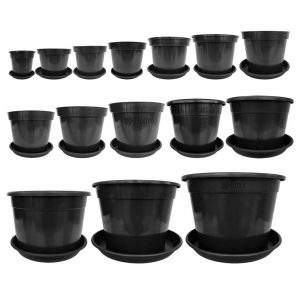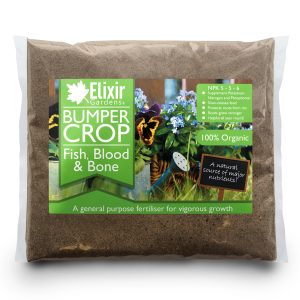Taking Hardwood Gooseberry Cuttings
Month:
February
Equipment:
4 litre deep rose pot
Sharp sand / Horticultural grit / Compost
Secateurs
Garden knife
Hormone rooting powder
Skill Level:
Beginner
Top Tips:
Mixing your own compost for this means you get a light and loose compost.
This will make taking the plants out of the pot far easier as the roots are less likely to become intertwined.
Step 1
Look for shoots from last season’s growth of around 12 inches long. Snip them off at the base to get your hardwood cutting.


Step 2
Remove the top part of the cutting growth that hasn’t ripened to full hardness. |
Step 3
Trim the bottom of the cutting to just below a bud to tidy it up and ensure a clean cut.


Step 4
From the top of the cutting count back 6 buds. Remove any buds and thorns below this point to prevent the plant throwing suckers.
Step 5
The ideal mix of compost for these cuttings is equal parts of horticultural grit, sharp sand and a good quality compost. Mix them thoroughly to leave a light and loose compost that will allow free drainage.


Step 6
Fill your pots. Using a deep 4 litre rose pot is ideal as this allows for plenty of room for the roots bellow the end of the cutting. Finally tap your compost mix down and firm gently.
Step 7
Dip the cutting ends in water and then push in to fresh hormone rooting power to coat the end. Tap off any excess. Push the cuttings into the compost down the side of the pot up to the first bud that you have left on it.


Step 8
The pot is big enough to take 6-7 cuttings. Using a loose open mix is ideal to avoid damaging the roots when it is time to separate them.
Step 9
Water and place outside away from direct sunlight to avoid stimulating growth. By late summer/early autumn they will have formed a strong root system and will be suitable to plant out and grow on.

Step 1
Look for shoots from last season’s growth of around 12 inches long. Snip them off at the base to get your hardwood cutting.

Step 2
Remove the top part of the cutting growth that hasn’t ripened to full hardness. |

Step 3
Trim the bottom of the cutting to just below a bud to tidy it up and ensure a clean cut.

Step 4
From the top of the cutting count back 6 buds. Remove any buds and thorns below this point to prevent the plant throwing suckers.

Step 5
The ideal mix of compost for these cuttings is equal parts of horticultural grit, sharp sand and a good quality compost. Mix them thoroughly to leave a light and loose compost that will allow free drainage.

Step 6
Fill your pots. Using a deep 4 litre rose pot is ideal as this allows for plenty of room for the roots bellow the end of the cutting. Finally tap your compost mix down and firm gently.

Step 7
Dip the cutting ends in water and then push in to fresh hormone rooting power to coat the end. Tap off any excess. Push the cuttings into the compost down the side of the pot up to the first bud that you have left on it.

Step 8
The pot is big enough to take 6-7 cuttings. Using a loose open mix is ideal to avoid damaging the roots when it is time to separate them.

Step 9
Water and place outside away from direct sunlight to avoid stimulating growth. By late summer/early autumn they will have formed a strong root system and will be suitable to plant out and grow on.

Featured Products
Take a look at our selected products below and get the best from your garden this winter!
-

Black Bird Netting | 1m-20m Widths & 1m-100m Lengths
£3.89 – £599.99 Select options This product has multiple variants. The options may be chosen on the product page -

Black Recycled Plastic Plant Pots and Saucers | Various Sizes
£6.79 – £188.29 Select options This product has multiple variants. The options may be chosen on the product page -

Bumper Crop Fish Blood & Bone Meal | Multi-Purpose Organic-Based Fertiliser
£5.99 – £40.99 Select options This product has multiple variants. The options may be chosen on the product page -

Complete Lawn 20kg | 4-in-1 Weed Feed & Moss Killer | 10-2-2+8Fe
£46.99 Select options This product has multiple variants. The options may be chosen on the product page -

COMPLETE LAWN 4 in 1 Weed, Feed & Moss Killer | 10-2-2+8 Fe
£5.99 – £59.89 Select options This product has multiple variants. The options may be chosen on the product page -

Green Bird Netting | 2m-10m Widths & 1m-100m Lengths
£4.89 – £179.99 Select options This product has multiple variants. The options may be chosen on the product page -

Large Black Round Pots with Reinforced Rim | 32 – 80 Litre Sizes | Available with Saucers
£10.99 – £188.29 Select options This product has multiple variants. The options may be chosen on the product page -

Roban25 Cut Wheat Rodent Poison | Strongest Available Online | 40g Sachets
£4.49 – £74.99 Select options This product has multiple variants. The options may be chosen on the product page -

Rodex25 Oktablok II Poison | Rat & Mouse Bait Blocks | 15 x 20g
£7.99 – £304.99 Select options This product has multiple variants. The options may be chosen on the product page -

Round Black Plastic Plant Pot Saucers / Water Trays | Various Sizes
£5.29 – £317.54 Select options This product has multiple variants. The options may be chosen on the product page











